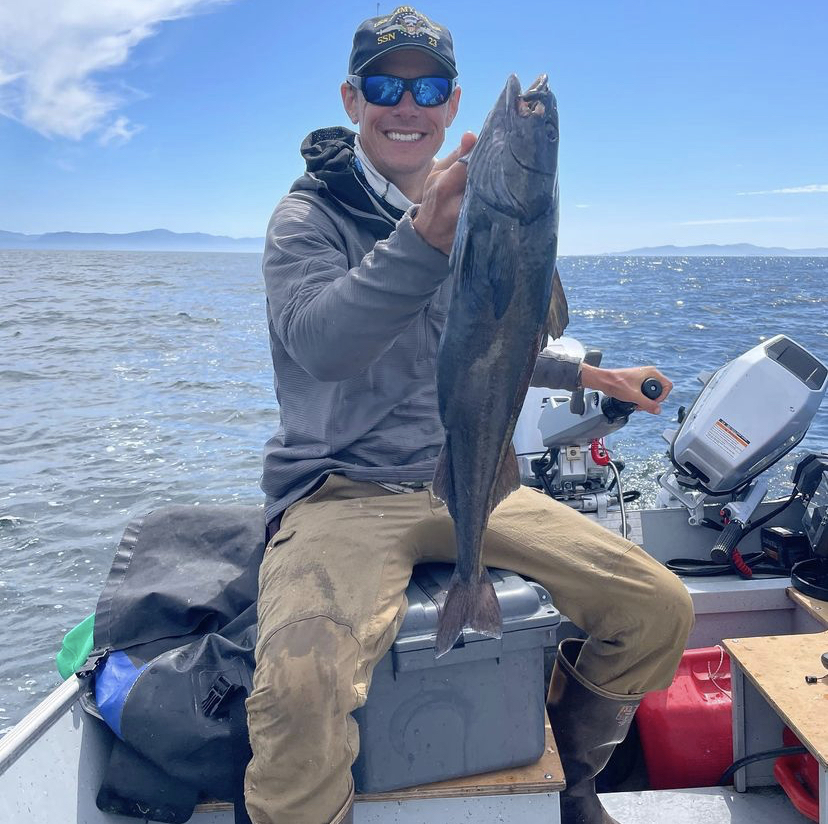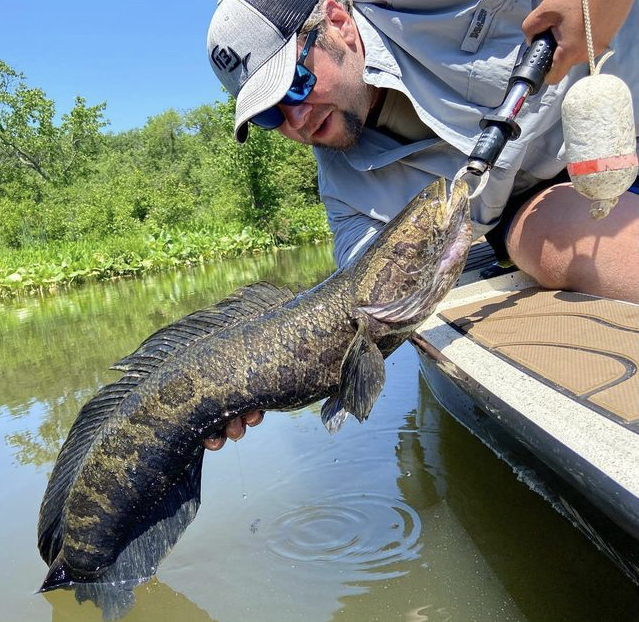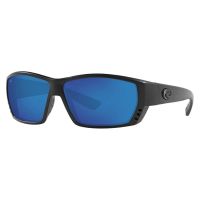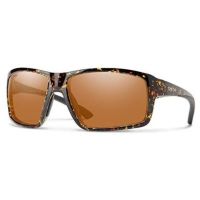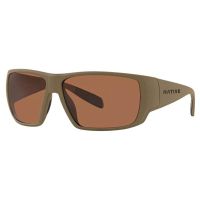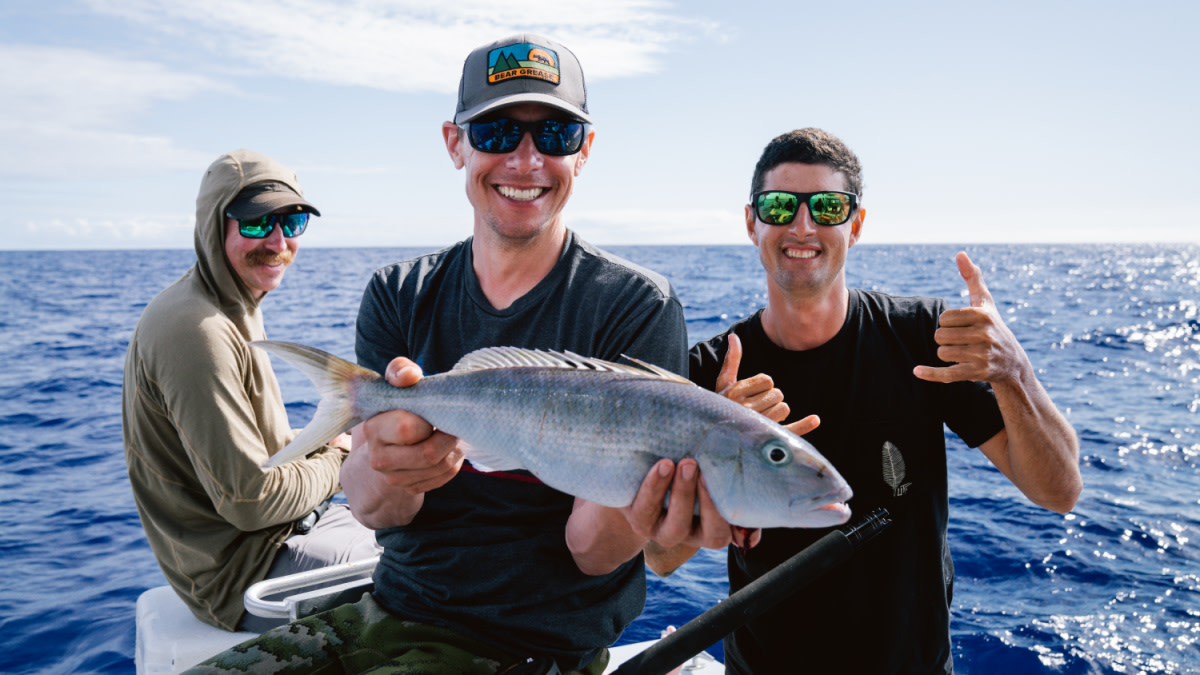
Sunglasses are to fishing what binoculars are to hunting: you’re not quite doing it right without a decent pair, and any serious participant always has a set glued to their face or hanging around their neck.
Like binoculars, you often get what you pay for. Unlike binoculars, however, fishing sunglasses have a proclivity toward jumping ship. With those considerations in mind, here are the shades our team wears on the water.
Jump to: The Fishing Sunglasses We Use
What We Look for in Good Fishing Sunglasses
Sunglasses are the epitome of a personal style statement. Anglers may be less conscious of that than your average Los Angeles resident, but most everyone ultimately wants a pair of shades that look good on their face. With that basic consideration aside, here’s how we pick glasses that help us catch fish as well as glances.
- Fit
- Shape
- Lens color
- Durability
The Sunglasses We Use
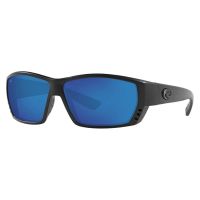 Costa Tuna Alley
Steve's Pick
|
 Smith Hookshot
Brody's Pick
|
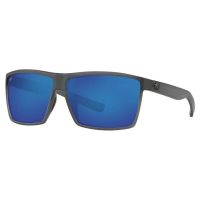 Costa Rincon
Joe's Pick
|
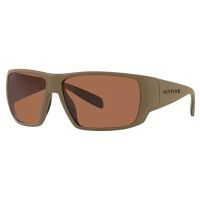 Native Sightcaster
Sam's Pick
|
|
|---|---|---|---|---|
| Highlight | Top of the Line | Lightest | Best Wide Frame | Budget Pick |
| Lens Material | Polarized Polycarbonate | Polarized Polycarbonate | Polarized Polycarbonate | Polarized Polycarbonate |
| Lens Color | Blue Mirror | ChromaPop Polarized Copper | Blue Mirror | Brown |
| Size | Large | Medium | Extra Large | Large |
| Fit | Regular | Regular | Wide | Regular |
| Price | $199* | $179* | $179* | $89* |
| Field Notes | Field Notes | Field Notes | Field Notes |
What Makes a Good Pair of Fishing Sunglasses
They aren’t fishing sunglasses if they aren’t polarized. What that means is the glass or composite only allows vertical bars of light to enter, blocking the horizontal light that reflects off the water’s surface. This lets you see into water much better than you could with the naked eye, while also diminishing the negative effects of harsh light reflecting off the water. With that up front, when we’re choosing a pair of fishing specs, here are the elements we’re analyzing:
1. Fit
At the most basic level, fit means that the frames don’t fall off your face without uncomfortably squeezing your temples. This element is unique to each person, so it’s important to try on a few pairs before you pull the trigger. Can you shake your head without them falling off? What about looking straight down? Are they comfortable on your temples and ears or are you going to get a migraine after a few hours of use? Rubber earpieces and nose pads can be very helpful in keeping the rims stuck to your face without applying too much pressure.
2. Shape
This is another subjective choice but one worth experimentation. Many anglers prefer a wraparound style of glasses that blocks light and wind from coming in the sides, which can affect your eyes. That can also have the downsides of making the lenses more prone to fogging or reducing your peripheral vision. A flatter profile with aviator or wayfarer shapes has also increased in popularity in recent years. Proponents often say they appreciate a little space around their face, more periphery, and less fogging. Dress to impress or dress for success, but consider first that the fish don’t give a shit how well you can throw an outfit together.
3. Lens color
For a supposedly clear liquid, water certainly takes on a wide variety of hues. From the pale green of a glacier-fed river to amber rockpiles on a lakebed to tropical white sand flats, there’s a lot of variability and your choice of sunglasses can directly address this. Generally speaking, anglers often select lenses that match the color of the water they fish most often. For offshore deep water, the popular choice is blue. For freestone trout streams, amber and copper are ubiquitous. Bass anglers often go with green. The basic idea here is to block the specific color of the water in order to see fish within it more accurately. Still, it’s a matter of personal choice and many of us have used the same lenses to fish for walleye in Montana and permit in Belize. Gray or silver lenses are a solid move for versatility, and yellow is great for low-light conditions.
4. Durability
We all know that one angler who refuses to spend more than $20 on a pair of sunglasses. Use them, abuse them, lose them, then pick up another pair at the gas station. There may be some strange wisdom to that practice for those who tend to misplace or break shades frequently, but many of us see value in quality construction that will hold out for as long as we hold on to the pair—which can be many years if you’re diligent. Real glass or high-end composite lenses won’t scratch, smudge, or fog up as quickly as cheap plastic. Well-built metal or composite frames, temples, and hinges likewise may be less likely to shatter, bend, or otherwise fail under hard use.
Field notes from the MeatEater Crew
Steve's Pick
Top of the Line
Steve is a big proponent of quality gear throughout a hunting or fishing kit. He also says that you need to find the gear that works for you, not what works for your buddy or another angler you admire. He’s found that in Costa Del Mar.
“I've been wearing Costa sunglasses for many years and really like the fit and glass,” Steve said. “They are clear and crisp and comfortable.”
Specifications
- Lens Material: Polarized Polycarbonate
- Lens Color: Blue Mirror
- Size: Large
- Fit: Regular
- Price: $199
Brody's Pick
Lightest
“Polarized sunglasses were always an indispensable part of my gear when I was paying the bills by guiding fly fishing clients and I still depend on them today for everything from sight fishing to spotting rocks that might otherwise ruin a prop blade," Brody Henderson said. “I seem to lose sunglasses like it’s my job, so I’ve worn all kinds of different shades on the water, from cheap convenience store throwaways to prescription glass lenses that set me back a few hundred bucks.”
He emphasizes the importance of finding shades that work for you over any particular brand. That said, he has developed an affinity for Smith: “All I can say is that brand doesn’t matter as much as getting something light and durable with a good fit and lens quality. Currently, my favorite pair are the Smith Hookshot. For an all-purpose fishing lens color that will handle various light and water conditions, I recommend ChromaPop Copper.”
Specifications
- Lens Material: Polarized Polycarbonate
- Lens Color: ChromaPop Polarized Copper
- Size: Medium
- Fit: Regular
- Price: $179
Joe's Pick
Best Wide Frame
“I tend to get stuck on fishing shades,” Joe Cermele said. “I might have 20 pairs kicking around, but when I find a model I really like, I rarely rotate until I lose them, accidentally crush them, or happen to find some I like even better. Good shades become part of you like a well broke-in hat, and for the last year or so, my shade of choice has been the Costa Rincon.”
Joe said that he’s actually a little surprised he likes these frames so much because they’re a bit of a departure from what you think of as a traditional pair of fishing sunglasses. Whereas many polarized glasses wrap around your face to block as much light as possible, the Rincons feature little side protection.
“They're what I'd call a cross between fishing glasses and classic ‘Risky Business’ shades, though they play to functionality far more than pure style,” he said. “The thin arms make them incredibly light and comfy, but the lenses are extra wide, providing plenty of coverage to help you see into the water. Most importantly for me, the arms have a slightly aggressive curve that keeps them planted on my dome with the help of rubber grips. If a pair of glasses is constantly falling off my face when I sweat or just move my head at a normal speed, I have no use for them. The Rincons have already proven they can hang on for a few wild rides in a range of conditions.”
Specifications
- Lens Material: Polarized Polycarbonate
- Lens Color: Blue Mirror
- Size: XL
- Fit: Wide
- Price: $179
Sam's Pick
Budget Pick
I don’t remove my sunglasses very often through the course of a serious day on the water. I usually put them on at dawn and pull them off at dusk, which allows my eyes to fully adjust to the shading and really get a polarized view of the world. That doesn’t happen as well when you’re getting natural light in the periphery. It’s incredibly difficult to see a steelhead holding in river current even with the best lenses, so I want to give my eyes the best possible chance of spotting that fish.
I really like a flat-faced, wayfarer-style frame for wearing around town and even passive fishing, but I find that the light and wind coming in the sides really messes with my visual acuity when I’m trying hard to see fish. You only get so many hours on the bow of a flats skiff. These Native Sightcasters aren’t the most expensive shades I own, but they’re the ones I’ve reached for most consistently the last few years. I even make a point to put them straight in the microfiber bag and into the case when I’m not fishing in order to keep the lenses in the best possible condition.
Specifications
- Lens Material: Polarized Polycarbonate
- Lens Color: Brown
- Size: Large
- Fit: Regular
- Price: $89

